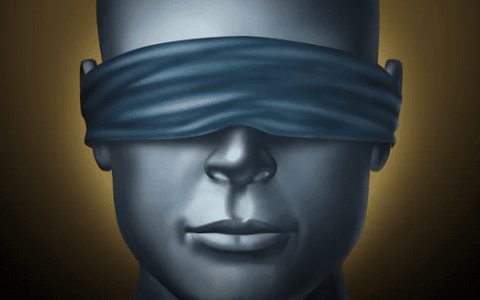Statistics lies in presence of ignorance.

By definition, ignorance means lack of knowledge, understanding, or information about something.
Statistics lies when a person presenting statistical data lacks knowledge, understanding, or information about statistical-methodological techniques which enable one to analyse data in scientifically objective way.
Although we live in an evidence-based world, our societies have not done enough to enable citizens to be statistically literate.
In old times, being able to read and write enabled citizens to have more prosperous life. Today’s data world requires statistical literacy.
Does this mean that if presentation of statistics is done by those who have studied statistics we do not need to worry about statistics lying?
Why is it so?
The thing is that for a long time we have been ‘living’ with an idea of a linear world. Statistics has also been taught that way and at many places it is still taught this way.
What is new?
In early 20th century a theory in physics was developed called quantum mechanics. Quantum mechanics enables calculations of properties of physical systems as also behaviours of physical systems.
With quantum mechanics we learnt that it is all about cause and effect – an action (cause) manipulates behaviour of objects or subjects and the effect is the impact of the action (cause/manipulation) that we observe.
Place and time play a significant role in the causal-effect field.
If we connect this information to the fact that most questions of interest are causal in their nature, we can conclude that in order for statistics not to lie, those who present it are required to understand how causal relationships are analysed in a scientifically objective way.
Why they do not have such important knowledge?
The science of 20th century was not responsible only for development of quantum mechanics, but also for development of statistical methods that enable to analyse causal relationships in a scientifically objective way. In the second half of the 20th century Donald B. Rubin developed a causal model – broadly known as the Rubin Causal Model (Holland 1986) — which opened a door for statistics to be more reflective of the true reality. This causal model is a foundation for causal-effect studies in varieties of fields, from medicine and public health to economics, environment, biology, law and business.
Imagine, it has been only 35 years ago when important contributions were done in the modern statistical science. It takes time for all the researchers to catch-up on these developments and also to change curriculum of applied statistics courses accordingly.
How the curriculum of applied statistics education should change?
The most important thing is that the curriculum shifts from technical and theoretical details to modern statistical thinking and the use of important methods and techniques to derive data-insights in scientifically objective way.
The next most important thing is introduction of causality in statistics. Students should learn basics about causality in statistics, e.g., how statistical science defines the cause, what is a causal design and how to design an objective causal design.
Bottom line, students need to learn about the processes required to analyse causal relationships in a scientifically objective way. To be able to do so, they also need to learn about the key concepts of the
modern statistical thinking – the thinking required to analyse data in a scientifically objective way.
Is there a course that consists of such applied statistics curriculum?
Our founder Dr. Ana Kolar has been developing such curricula for the past 5 years. Some of her in-person courses can be attended at University of Helsinki. For those interested in online learning, you can find online version of courses here.
Please keep in mind that Ana uses experiential learning approach which enables deep learning. The online version of her courses are created in this spirit too. Ana believes that students should have an opportunity to deepen their knowledge when going through the learning process because this is the only way to knowledge. Students often rate her as an excellent teacher. She is fun too!
Can I learn about how to analyse causal relationships by studying books and articles?
Yes. There are plenty of books, articles and online lectures that one can use to learn about Causal Inference, but, without a proper guidance, it will take years to grasp the foundations of Causal Inference in its completeness.
It is not a secret that the field of analysing causal relationships is one of the most complex and difficult. It is a field of study that requires a heavy use of ‘thinking’ and a holistic approach in order to
resolve complexities. It is the use of modern statistical thinking that is more important here than elsewhere. It is the thinking that is based on the key developments of modern statistical science.
If you do not understand how to analyse causal relationships using the latest tools of modern statistical science, then your data analysis could lead to severe biases.